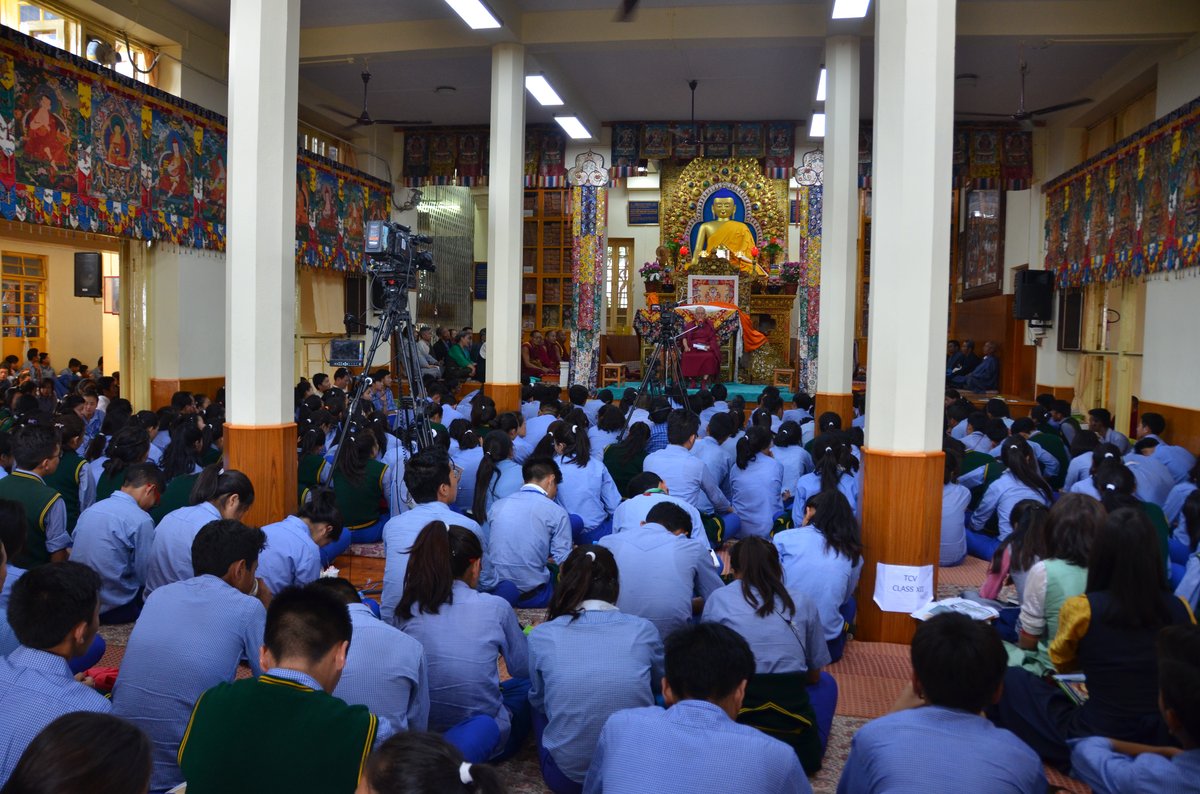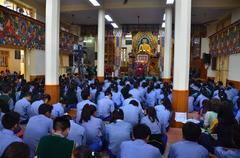
Namgyal Monastery Visiting Hours, Tickets, and Dharamshala Historical Sites: A Complete Guide
Introduction
Namgyal Monastery, perched in the Himalayan foothills of McLeod Ganj, Dharamshala, is not only the personal monastery of His Holiness the 14th Dalai Lama but also a vibrant hub of Tibetan Buddhist tradition, culture, and resilience. As a vital spiritual center and one of the most important Dharamshala historical sites, Namgyal Monastery invites visitors from around the world to witness living Buddhist rituals, explore its rich history, and experience the tranquil beauty of its mountain setting. This guide provides detailed information on visiting hours, ticket policies, accessibility, travel tips, and nearby attractions to help you plan a meaningful and respectful visit.
Table of Contents
- History and Cultural Significance
- Getting There: Transportation and Accessibility
- Visiting Hours and Ticket Information
- Best Time to Visit
- Dress Code, Etiquette, and Photography
- Facilities and Accessibility
- Onsite Experience: What to See and Do
- Safety and Responsible Tourism
- Guided Tours, Language, and Communication
- Nearby Amenities and Attractions
- Frequently Asked Questions (FAQs)
- Conclusion & Call to Action
- References
History and Cultural Significance
Namgyal Monastery was founded in 1564–65 by the Second Dalai Lama, Gendun Gyatso, in Lhasa, Tibet. It served as the Dalai Lamas’ personal monastery and played a central role in Tibetan religious and cultural life. After the 1959 Tibetan Uprising, the 14th Dalai Lama and a group of Namgyal monks escaped to India, eventually re-establishing the monastery in McLeod Ganj, Dharamshala. Today, Namgyal Monastery is home to around 200 monks and remains a cornerstone for preserving Tibetan rituals, philosophy, arts, and resilience in exile (lakesinhimachal.com).
Getting There: Transportation and Accessibility
Location: McLeod Ganj, Dharamshala, Himachal Pradesh, India (Postal code 176219).
- By Air: Fly into Dharamsala-Kangra Airport (Gaggal Airport), 14 km from Dharamshala. Taxis and local cabs are available for the journey to McLeod Ganj and the monastery (indiano.travel).
- By Rail: The nearest railway station is Pathankot (90 km away). From Pathankot, buses and taxis connect to Dharamshala and McLeod Ganj.
- By Road: Dharamshala is accessible by state-run buses, private coaches, and taxis from major North Indian cities. Local rickshaws and cabs are available for the uphill trip to McLeod Ganj.
Visiting Hours and Ticket Information
- Opening Hours: The monastery generally welcomes visitors daily from 5:00 am to 5:00 pm. Some sources note extended hours on certain days up to 8:30 pm (indiano.travel, traveltriangle.com).
- Entry Fee: There is no entry fee or ticket required to visit Namgyal Monastery (indiano.travel).
Tip: Hours may change during major festivals or teachings. Check locally for the latest updates.
Best Time to Visit
- Seasons: The best months are spring (March–June) and autumn (September–November), with pleasant temperatures and clear skies (travelsetu.com).
- Festivals: Visiting during Tibetan festivals—such as the Dalai Lama’s birthday (6th July), Losar (Tibetan New Year, Feb/March), or Monlam (Great Prayer Festival)—provides a unique, lively experience with rituals and cultural programs.
- Monsoon (July–August): Heavy rains can disrupt travel and outdoor activities. Plan accordingly (travelsetu.com).
Dress Code, Etiquette, and Photography
- Dress: Wear modest clothing; shoulders and knees should be covered.
- Shoes: Remove shoes before entering prayer halls.
- Behavior: Maintain silence or speak softly. Avoid disturbing monks during prayers or rituals.
- Photography: Permitted in most outer areas, but restricted in certain sacred spaces. Always look for signs or ask for permission (indiano.travel).
Facilities and Accessibility
- Restrooms: Basic facilities are available within the monastery grounds.
- Physical Accessibility: The monastery sits atop a hill and is accessed by a zig-zag staircase. There are no elevators or ramps—visitors with mobility challenges may need assistance (indiano.travel).
- Seating: The worship hall is spacious and can accommodate many visitors.
Onsite Experience: What to See and Do
- Prayer Wheels: Walk clockwise around the monastery, spinning the many prayer wheels as a devotional act.
- Chanting and Rituals: Observe the monks’ chanting and rituals, especially during early mornings and evenings.
- Buddha Statues: Admire the large, intricately decorated Buddha statues, which are focal points for meditation.
- Courtyard and Architecture: Explore the mountain-inspired architecture, tranquil courtyards, and vibrant prayer flags (indiano.travel).
- Festivals and Teachings: Attend public teachings, meditation sessions, or festivals if your visit coincides.
- Tsuglagkhang Complex: Visit the adjacent Dalai Lama Temple and Tibet Museum for a comprehensive spiritual and historical experience (travelsetu.com).
Safety and Responsible Tourism
- General Safety: The monastery is considered very safe for solo travelers and families (indiano.travel).
- Personal Belongings: Keep valuables secure and be mindful of your surroundings.
- Respect Monastic Life: Support the monks’ daily routines by observing silence and staying within designated visitor areas.
- Donations: Contributions are appreciated but not mandatory; they help support the monastery’s upkeep and educational activities.
Guided Tours, Language, and Communication
- Guides: There are no official guides, but monks and informational plaques may provide insights if you ask respectfully (indiano.travel).
- Language: Tibetan, Hindi, and English are commonly spoken. Most signage is in English and Tibetan.
Nearby Amenities and Attractions
- Food & Drink: McLeod Ganj offers a wide range of restaurants and cafés with Tibetan, Indian, and international cuisine.
- Accommodation: From budget hostels to boutique hotels, options abound in McLeod Ganj and Dharamshala (indiano.travel).
- Other Sites: Don’t miss the Tsuglagkhang Complex (Dalai Lama Temple), Tibet Museum, and St. John in the Wilderness Church (travelsetu.com).
Frequently Asked Questions (FAQs)
Q: Do I need to buy tickets to visit Namgyal Monastery?
A: No, entry is free for all visitors.
Q: What are Namgyal Monastery’s visiting hours?
A: Typically, it is open daily from 5:00 am to 5:00 pm, with possible extended hours up to 8:30 pm on some days.
Q: Is the monastery accessible for people with mobility issues?
A: Due to stairs and the hilly location, accessibility is limited.
Q: Can I take photographs inside the monastery?
A: Allowed in some areas, but restricted in others. Always check signs or ask staff/monks.
Q: When is the best time to visit?
A: Spring (March–June) and autumn (September–November) offer the best weather and cultural events.
Conclusion & Call to Action
A visit to Namgyal Monastery is much more than sightseeing—it is an opportunity to engage with living Tibetan Buddhist traditions, witness the resilience of a vibrant culture in exile, and find spiritual solace amidst breathtaking Himalayan scenery. As part of Dharamshala’s historical tapestry, Namgyal Monastery welcomes visitors of all backgrounds to learn, reflect, and support the preservation of Tibetan heritage.
Plan your visit:
- Check local schedules for meditation sessions, teachings, and festivals.
- Dress respectfully and follow monastery etiquette.
- Download the Audiala app for guided tours, updates, and travel tips.
For more travel inspiration and practical guides, follow us on social media and explore our related articles on Dharamshala’s historical gems.
